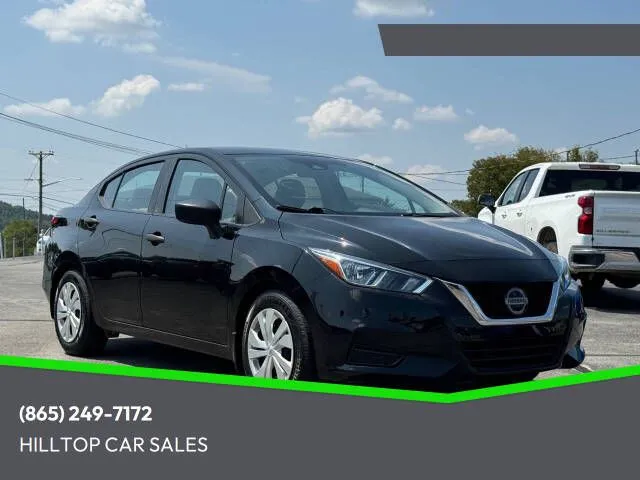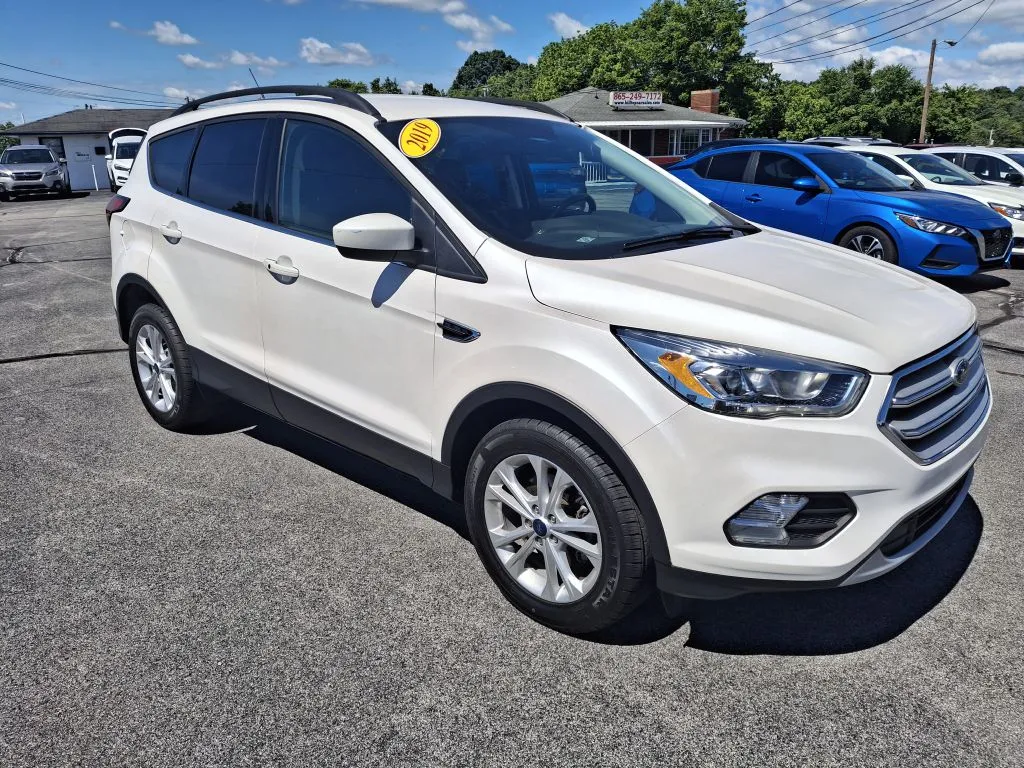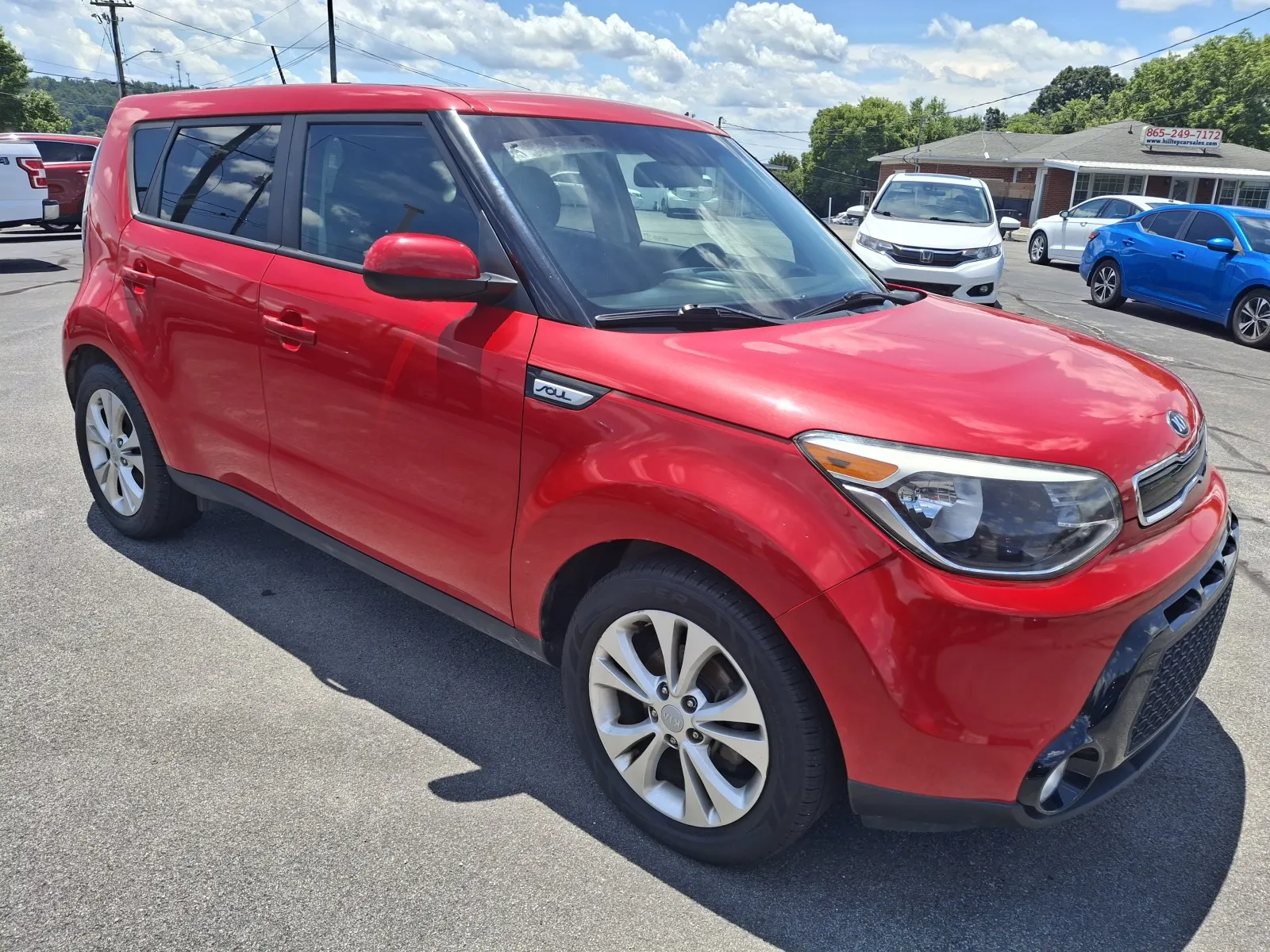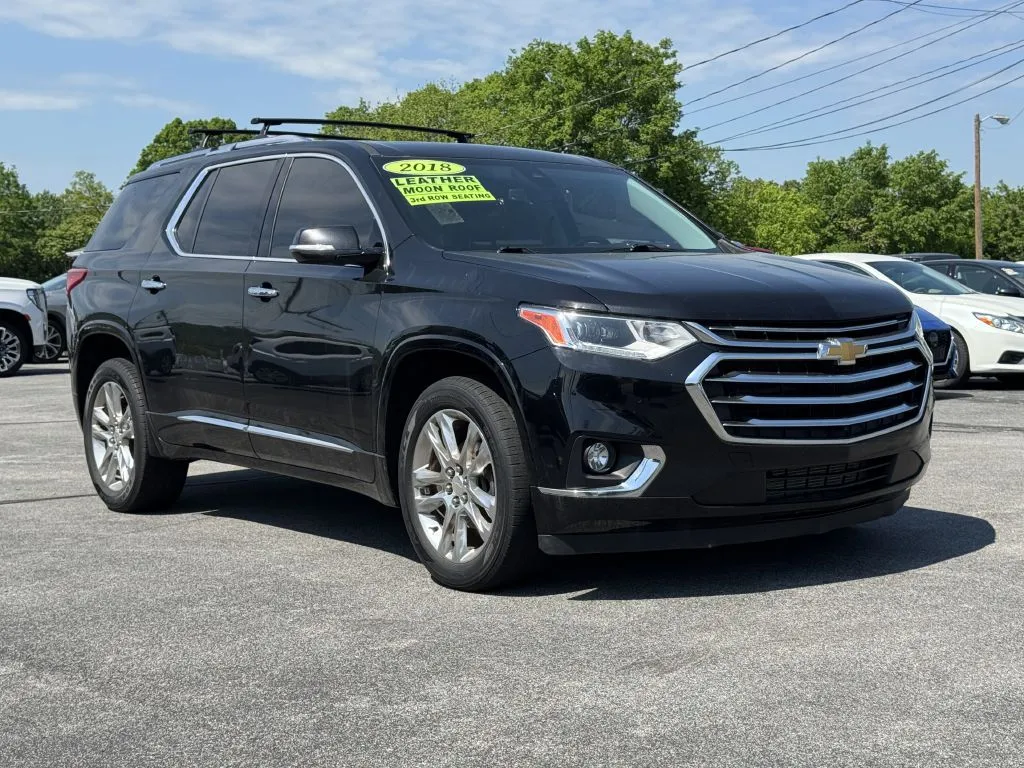Reliable Used Cars Under $10,000: Best Picks & Buying Tips
Table of Contents
Top Reliable Used Cars Under $10,000
Finding a reliable used car under $10,000 can feel tough, but there are still plenty of dependable options out there. Models like the 2010 Toyota RAV4, 2012 Chevrolet Malibu, and 2011 Buick Lucerne are known for solid reliability and staying within a reasonable budget.
These cars have earned high marks from auto experts. Many owners have gotten years of dependable service from them.
The trick is knowing which models to look for and which features matter most. Smart buyers check reliability ratings, maintenance costs, and safety records.
Compact sedans, fuel-efficient hatchbacks, and practical SUVs usually deliver the best value and peace of mind.
Key Takeaways
- There are several reliable used cars under $10,000 with high dependability ratings.
- Check reliability scores, safety features, and ownership costs before buying.
- Good research and careful inspection help you find a car that’ll last.
Top Reliable Used Cars Under $10,000
These four models often show up on lists of affordable used cars that are actually worth the money. They offer proven reliability, low maintenance costs, and hold their value pretty well.
Toyota Corolla
The Toyota Corolla is a classic pick for a used car under $10,000. Models from 2010-2012 usually go for $6,900 to $9,500.
Key Reliability Features:
- Simple, proven engine design
- Low maintenance costs
The Corolla’s four-cylinder engine often keeps running past 200,000 miles if you just do basic maintenance. Fuel economy is great, usually around 28-34 mpg.
Most problems are minor and cheap to fix. The interior feels basic, but the controls are easy to use.
Best Years to Target:
- 2009-2013 models
- Skip 2014-2016 (CVT transmission issues)
Honda Civic
The Honda Civic is always in the mix as a reliable used car. You can usually find 2008-2012 models for less than $10,000.
Reliability Highlights:
- Durable engine and transmission
- Low repair frequency
The Civic is a bit more fun to drive than a Corolla. It’s got enough power for everyday driving and still saves gas.
There’s good room inside, and the back seats fold down for extra cargo space.
Maintenance Considerations:
- Oil changes every 7,500 miles
- Timing belt at 100,000 miles
- Brake pads last 50,000-70,000 miles
Mazda3
The Mazda3 gives you sporty handling without giving up reliability. Look for 2010-2013 models for the best mix of features and price.
Performance and Reliability:
- Responsive steering and handling
- Reliable four-cylinder engine
If you want a small car that’s actually fun, the Mazda3 is worth a look. The ride is firm but controlled.
Gas mileage is decent, averaging 28-32 mpg. The interior feels a bit nicer than most cars in this price range.
Common Issues:
- Rust in northern states
- Some electrical issues after 100,000 miles
- Air conditioning compressor might need replacing around 120,000 miles
Toyota Camry
The Toyota Camry is the midsize sedan to check out under $10,000. Models from 2007-2011 usually fit the budget.
Reliability Strengths:
- Proven four-cylinder and V6 engines
- Spacious interior and trunk
There’s more room for people and stuff than in smaller cars. The four-cylinder engine balances power and fuel efficiency.
Maintenance Schedule:
- Oil changes every 5,000-7,500 miles
- Transmission fluid at 60,000 miles
- Brakes every 40,000-60,000 miles
V6 models are quicker but use more gas. Most buyers will be happy with the four-cylinder.
Some high-mileage Camrys need a timing belt. But overall, maintenance costs stay reasonable.
Best Value Sedans for Reliability
Sedans are a sweet spot for comfort, fuel economy, and reliability. The Honda Accord, Toyota Avalon, and Buick LaCrosse stand out for strong performance and low repair costs.
Honda Accord
The Honda Accord is one of the most reliable midsize sedans under $10,000. The 2012 Accord is a safe bet for dependability and lower maintenance costs.
Key Strengths:
- Strong resale value
- Great fuel economy
The four-cylinder has enough power for daily use. The V6 is faster, but it burns more gas.
There’s lots of space inside, and the trunk fits plenty. The dashboard is simple and easy to figure out.
Common Issues:
- Some years have transmission problems
- Air conditioning compressor can fail
- Power steering pump wears out
Most 2010-2012 Accords cost $7,000-$9,500. Higher mileage ones are cheaper but usually still reliable.
Toyota Avalon
The 2010 Toyota Avalon brings near-luxury comfort and Toyota reliability. J.D. Power gave it an 89/100 reliability score, and the average price is around $8,800.
The V6 engine is smooth and gets decent gas mileage for a bigger car. Merging and passing on the highway is easy.
Interior Features:
- Big cabin with lots of legroom
- Reclining back seats
- High-quality materials
- Quiet ride
It’s a good pick for families or anyone who wants a roomy car.
Reliability Highlights:
- Proven Toyota powertrain
- Great safety ratings
The only real downside is that the rear seats don’t fold down, so cargo space is a bit limited. The trunk is still pretty big, though.
Buick LaCrosse
The Buick LaCrosse gives you luxury features for less. 2010-2012 models have good reliability and some nice upgrades.
The base V6 engine handles most driving with no problem. Gas mileage is fair for a car this size.
Comfort Features:
- Quiet cabin
- Supportive seats
- Smooth ride
- Premium materials
The LaCrosse focuses on comfort over sporty handling. It’s a nice cruiser for the highway.
Technology and Safety:
- Available touchscreen
- Bluetooth
- Strong crash test ratings
Reliability is solid, but you might see some electrical issues. Parts can cost a bit more than Honda or Toyota, but not as much as European brands.
Most LaCrosse cars under $10,000 will have higher miles. With regular maintenance, they still last a long time.
Recommended Compact Cars and Hatchbacks
If you want a reliable hybrid compact car under $10,000, the Toyota Prius and Prius c are hard to beat. Both get excellent gas mileage and have solid reputations for reliability.
Toyota Prius
The Toyota Prius is known for its fuel economy and reliability. The 2011 model year usually gives you the best deal on hybrid technology without busting your budget.
Key Features:
- Fuel Economy: Up to 50 mpg combined
- Reliability: Long-lasting
- Interior Space: Roomy for passengers and cargo
It uses a 1.8-liter four-cylinder engine and an electric motor. That combo gives enough power for daily driving and saves gas.
Look for cars with full service records. The hybrid battery usually lasts 150,000 to 200,000 miles.
Toyota Prius c
The Toyota Prius c is a smaller, more affordable hybrid. It usually costs less than a standard Prius and still gets great gas mileage.
Specifications:
- Engine: 1.5-liter four-cylinder hybrid
- Fuel Economy: Up to 46 mpg
- Size: More compact than regular Prius
It’s easy to park and great for city driving. Seats four comfortably and has enough cargo space for daily errands.
Models from 2012-2015 are usually under $10,000. It uses the same reliable Toyota hybrid tech, just in a smaller package.
Reliable SUVs and Crossovers
If you want a dependable SUV under $10,000, stick with models that have proven themselves. The Subaru Legacy is worth a look for its reliability and practical features.
Subaru Legacy
The Subaru Legacy is a reliable mid-size sedan that works well for budget-conscious buyers. 2010-2013 models usually fit the $10,000 range.
Key Reliability Features:
- All-wheel drive comes standard
- Boxer engine design helps with smoothness
- Strong safety ratings year after year
Legacy owners report fewer big repairs than with similar cars. The all-wheel drive is a big plus for bad weather, and it doesn’t hurt gas mileage much.
Maintenance costs aren’t too bad. Watch for CV joint wear around 100,000 miles and head gasket problems in older models, but these are known issues and can be managed.
There’s 15.1 cubic feet of trunk space and room for five adults. Gas mileage is usually 25-30 mpg depending on the year and how you drive.
Essential Safety Features to Look For
Modern safety tech can really make a difference, even in budget-friendly used cars. Electronic stability control helps you stay in control during emergencies, and forward collision warning systems can alert you before a crash.
Electronic Stability Control (ESC)
Electronic stability control became standard on all U.S. vehicles after 2012. This system helps keep cars from rolling over or spinning out in sharp turns.
ESC checks where the car is going and where you’re steering. If things don’t match up, it applies brakes to certain wheels to help out.
ESC cuts down single-car crashes by 35% and SUV rollovers by 67%. If you’re shopping for a 2012 or newer car, make sure it has ESC.
Key ESC benefits:
- Stops skidding on wet or icy roads
- Lowers rollover risk in SUVs and trucks
- Works automatically
- Helps most in emergencies
Forward Collision Warning
Forward collision warning systems use sensors to spot cars ahead and warn you if you’re getting too close. They started showing up in cheaper cars around 2015.
These systems use cameras, radar, or both to watch traffic. If they think you might crash, they’ll alert you—sometimes with lights, sounds, or even a vibration.
Some cars just warn you, while others can brake automatically. Even the basic warning systems cut rear-end crashes by 27%.
What to look for:
- Dashboard alerts
- Beeping or warning sounds
- Steering wheel vibration
- Automatic braking (if it’s there)
You can find cars like the 2015 Chevrolet Sonic with forward collision warning for under $10,000.
Evaluating Vehicle History and Ownership Costs
Reviewing maintenance records shows how well the previous owners cared for the car. Insurance rates and tax bills can sneak up and add a lot to the cost of owning a used vehicle.
Understanding Maintenance Records
Complete maintenance records help you see if a used car got proper care. Oil changes every 3,000-5,000 miles usually mean someone cared.
If records are missing, you might have problems ahead. Look for receipts from big jobs like timing belt replacements, brake work, and transmission service.
Skipping these repairs can cost hundreds, sometimes thousands. A well-maintained 2010 Toyota Corolla with all the paperwork is a smarter buy than a cheaper one with no history.
Red flags include:
- Gaps longer than 6 months between oil changes
- No records of major scheduled maintenance
- Multiple repair attempts for the same problem
- Signs of accident damage or flood exposure
Ask the seller for digital copies of all service records. If you can, call the previous mechanic to check the work.
CarFax and AutoCheck reports add extra maintenance history from some shops.
Factoring in Insurance and Taxes
Insurance rates swing a lot based on the car, year, and where you live. Sports cars and luxury rides cost more to insure than basic sedans.
A 2012 Chevrolet Malibu usually costs less to insure than a 2010 Audi A6. Get insurance quotes before you buy any used car.
Safety ratings, theft rates, and repair costs all affect your rate. Cars with pricey parts or high theft rates will drive up your premiums.
Annual ownership costs to keep in mind:
- Registration fees ($50-$200 per year)
- Property taxes (depends on state and car value)
- Inspection fees ($10-$50 per year)
- Emission testing if your state requires it
States like California and New York charge higher fees and taxes than Texas or Florida. Check your local DMV for the real numbers.
Add these costs to your budget when comparing affordable used cars.
How to Shop for a Used Car Under $10,000
Finding a good used car means knowing where to look and what to check. The right approach can help you get a ride that lasts.
Where to Find Reliable Listings
Online platforms give you tons of options for used cars. Carfax lists thousands of cars under $10,000 and provides detailed vehicle history reports.
Their listings often show accident-free and single-owner cars. Cars.com and AutoTrader have big inventories from both dealers and private sellers.
You can filter by price, mileage, or even zip code. Local dealerships offer warranties and financing options.
They usually inspect cars before selling, but their prices might be higher than private sellers. Private sellers, often found on Craigslist and Facebook Marketplace, usually ask less.
But you have to be careful—there’s less protection. Consumer Reports suggests checking several sources before you buy.
Their reliability ratings can help you spot models that hold up well.
Inspection and Test Drive Tips
Always do a visual inspection before you drive. Look for rust, dents, and paint damage.
Check the interior—normal wear is fine, but big stains or tears could mean trouble. Under the hood, watch for fluid leaks and corrosion.
Check the oil—if it’s dark and thick, maintenance might’ve been skipped. Take a test drive for at least 20 minutes.
Try highways, city streets, and parking lots. The steering should feel smooth, and the brakes should stop you without weird noises.
Listen for odd sounds from the engine or transmission. The car should start easily and idle without shaking.
Test all the lights, radio, and air conditioning. If it’s winter, check the heat.
A pre-purchase inspection by your mechanic costs around $100-200. It’s worth it to avoid big surprises later.
Negotiating Price and Closing the Deal
Check the car’s value on Kelley Blue Book or Edmunds before you start haggling. These sites give you a fair price range based on mileage and condition.
Start your offer below the asking price. Point out any repairs or maintenance the car needs.
Cash can motivate sellers to accept less. Private sellers usually have more wiggle room than dealers.
Sometimes they’ll take 10-15% less for a quick sale. Go over all paperwork before signing anything.
Make sure the title is clear and the VIN matches the documents. Arrange your loan through a bank or credit union if you can—pre-approved loans often have better rates.
Set aside some cash for repairs right after you buy. Even reliable used cars under $10,000 might need new tires or brakes soon.
Comparing Reliability Ratings and Reports
Knowing reliability ratings helps you make smarter choices when shopping for used cars under $10,000. Consumer Reports data and long-term studies are your best friends for finding dependable vehicles.
Utilizing Consumer Reports Findings
Consumer Reports tests thousands of cars and tracks how they hold up. Their reliability ratings come from real owners and their own tests.
They use a five-point scale for reliability. Cars rated "Much Better Than Average" or "Better Than Average" are usually the safest bets for budget buyers.
Key Consumer Reports metrics:
- Predicted reliability scores
- Owner satisfaction ratings
- Repair frequency data
- Cost of ownership estimates
Consumer Reports also points out common problem areas for each car. They track issues like engine trouble, transmission failures, and electrical glitches.
Their annual survey covers over 400,000 vehicles. That’s a big sample, so the findings carry some weight.
Interpreting Long-Term Reliability Data
Long-term data shows how cars do after five or ten years. This matters most when you’re buying an older ride.
Important data points:
- Average repair costs per year
- Frequency of major breakdowns
- Typical lifespan of key parts
- Maintenance schedule needs
J.D. Power gives three-year reliability predictions based on quality and dependability. They score cars from 0 to 100.
Cars with 91-100 points get "Best" ratings. 81-90 points means "Great."
These scores help you compare models fast. For cars over ten years old, though, reliability data isn’t as reliable.
At that point, a car’s maintenance history and how it was treated matter more than the original rating.
Financing and Warranty Considerations
Financing a used car under $10,000 takes a different approach than buying new. Warranty protection also becomes a bigger deal with older cars.
Understanding these money matters can save you headaches.
Financing Options for Used Car Buyers
Traditional bank loans usually have the best rates. Most banks and credit unions will finance cars up to 7-10 years old.
Interest rates for good credit land between 4-8%. Dealer financing is convenient, but rates are often higher.
Dealers work with lots of lenders, so buyers with different credit scores can get approved. Some dealers focus on older cars that banks won’t touch.
Personal loans are another option for cars under $10,000. These don’t use the car as collateral.
Credit unions usually have the best personal loan rates. Paying in cash means no interest or monthly payments.
You own the car outright, but make sure you keep cash for repairs. Buy-here-pay-here lots help buyers with bad credit, but their interest rates can be sky-high.
Monthly payments sometimes end up more than the car’s worth.
Assessing Aftermarket Warranty Coverage
Extended warranties for older cars cost $1,200-$2,500 a year. Most cover the big stuff—engine and transmission.
Read the fine print so you know what’s left out. Powertrain warranties cover the engine, transmission, and drivetrain.
Coverage usually lasts 12-36 months or up to 36,000 miles. Bumper-to-bumper warranties cover more things, like electrical systems and air conditioning.
They cost more, and you’ll pay a deductible of $50-$200 per repair. Third-party warranties sometimes offer better value than dealer plans.
Companies like Endurance and CarShield have different coverage levels. Always check ratings and customer reviews before you buy.
Most warranties need pre-approval for repairs. Some make you use certain shops, others let you pick any licensed mechanic.
Knowing these rules can save you from denied claims later.
Maximizing Value After Your Purchase
Smart maintenance can stretch your affordable used car’s life by years. Good habits protect your investment and keep your car running well.
Routine Maintenance Tips
Oil Changes are still the most important thing. Change oil every 3,000-5,000 miles, especially with older cars.
Fluid Checks should happen every month:
- Brake fluid
- Coolant
- Power steering fluid
- Transmission fluid
Tire Maintenance saves money and keeps you safe. Check tire pressure monthly.
Rotate tires every 6,000-8,000 miles. Replace them when tread drops below 2/32 of an inch.
Filter Replacements help your engine breathe. Change air filters every 12,000-15,000 miles.
Swap out cabin filters every 12,000 miles or once a year. Battery Care keeps you from getting stranded.
Clean the terminals monthly and test the battery before winter. Most last 3-5 years.
Improving Longevity and Resale Value
Keep Detailed Records of all repairs and maintenance. Future buyers usually pay more for cars with full service histories.
Store receipts and logs in a folder or even just a shoebox. Fix Problems Early before they get worse.
Weird noises, warning lights, or changes in how the car drives need attention right away. Small fixes cost less than major repairs.
Protect the Interior with seat covers, mats, and sun shades. Clean up spills fast and vacuum often.
A clean interior can really boost resale value. Wash and Wax your car every couple of months.
It helps prevent rust and paint damage. Parking in the shade keeps the finish looking better, too.
Use Quality Parts for repairs. Cheap parts break faster and can mess up other things.
Original manufacturer parts usually work best for reliable used cars.
Frequently Asked Questions
People have lots of questions about reliability, maintenance, and safety when shopping for used cars under $10,000. Most want trustworthy vehicles with proven track records and reasonable costs.
What are the top-rated used cars available for under $10,000 according to industry experts?
The 2011 Cadillac DTS leads with a J.D. Power reliability score of 93/100 at $8,036. The 2013 Buick Verano and 2011 Buick Lucerne both score 91/100 and cost $9,851 and $7,624.
Several models score 89/100, like the 2012 Lincoln MKZ at $9,825, 2010 Audi A6 at $9,150, and 2010 Toyota Avalon at $8,806. The 2012 Scion xD, 2012 Chevrolet Malibu, and 2011 Chevrolet Volt also hit 89/100, ranging from $7,109 to $7,337.
The 2010 Toyota RAV4 scores 88/100 at $8,467. It’s a compact SUV with good cargo space and solid reliability.
Which used car models offer the best reliability and value for a budget of $10,000?
Toyota models almost always deliver great value and reliability. The 2010 Toyota Avalon gives you near-luxury features at $8,806, with roomy seats and a fuel-friendly V6.
The 2010 Toyota RAV4 brings SUV flexibility at $8,467, with good cargo space and optional third-row seats. Buick vehicles offer luxury touches for less.
The 2013 Buick Verano is $9,851 and has a premium interior with smooth handling. The 2011 Chevrolet Volt stands out for fuel savings at $7,109.
Its plug-in hybrid system can go up to 50 miles on electric power alone.
What are common maintenance costs for used cars priced below $10,000?
Maintenance costs depend on the brand and how old the car is. Toyota and Honda usually have lower repair bills because their parts are easy to find and they’re built to last.
Luxury brands like Audi and Cadillac can cost more to maintain. Premium parts and special service drive up the price.
Hybrids like the Chevrolet Volt might need pricey battery replacements, but they save a lot on gas. Regular stuff—oil changes, brake pads, and tires—cost about the same for most cars in this price range.
How can I find a trustworthy pre-owned vehicle within a $10,000 budget?
Start by checking vehicle history reports before you buy any used car. These reports show accident history, past owners, and maintenance records.
Look up J.D. Power reliability scores to spot dependable models. A score between 91 and 100 is best, while 81 to 90 is still pretty good.
Take a close look at the car yourself, or better yet, hire a good mechanic for a pre-purchase inspection. You really don't want to skip this step—it can save you from nasty surprises later.
Stick to reputable dealers or certified pre-owned programs if you can. They usually offer some kind of warranty or guarantee, which feels a lot safer.
Are there specific model years to look for when searching for reliable used cars under $10,000?
The 2010 to 2013 model years hit a sweet spot for reliability and price. Cars from these years have solid track records and usually fit under $10,000.
2010 Toyota models, like the RAV4 and Avalon, stand out for their reliability. They're a bit older but have fewer common problems than some newer cars.
If you want a touch of luxury, check out 2011 to 2013 Buicks. The Verano and Lucerne give you that premium feel without breaking the bank.
Chevrolet models from 2011 and 2012, like the Malibu and Volt, also offer good value. Their reliability scores are strong and they tend to hold up well.
What safety features should I expect in a used car that costs less than $10,000?
You’ll usually find airbags, anti-lock brakes, and electronic stability control in most cars from 2010 to 2013. These basics show up in almost every vehicle from those years.
Starting around 2012 or 2013, a lot more cars started to include backup cameras. Some even have parking sensors or blind spot monitoring, but not every car will have those.
Crash test ratings can really depend on the model and year. It’s smart to check out NHTSA and IIHS scores for the exact car you’re thinking about.
Honestly, safety tech just keeps getting better every year. If you can stretch for a newer car in your price range, you might find a few extra driver assistance features tucked in there.
The trick is knowing which models to look for and which features matter most. Smart buyers check reliability ratings, maintenance costs, and safety records.
Compact sedans, fuel-efficient hatchbacks, and practical SUVs usually deliver the best value and peace of mind.
Key Takeaways
- There are several reliable used cars under $10,000 with high dependability ratings.
- Check reliability scores, safety features, and ownership costs before buying.
- Good research and careful inspection help you find a car that’ll last.











